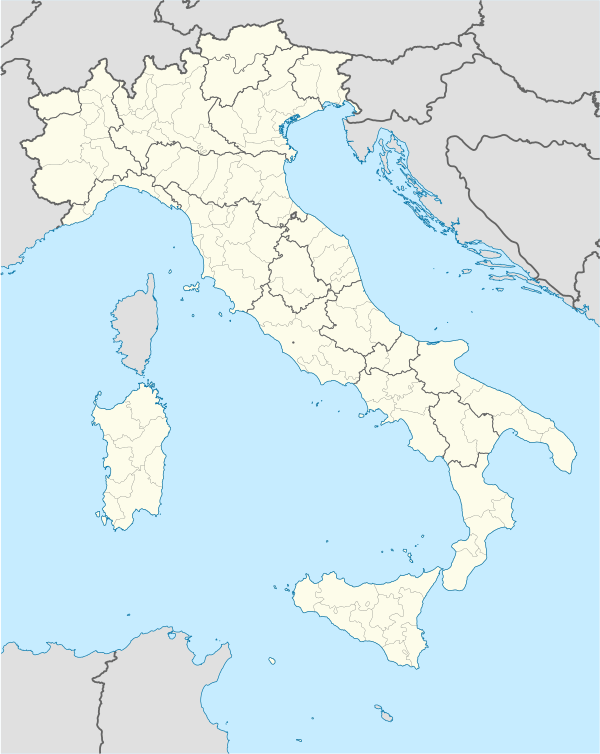Gangi, Sicily
| Gangi | |
|---|---|
| Comune | |
| Comune di Gangi | |
 | |
 Gangi Location of Gangi in Italy | |
| Coordinates: 37°48′N 14°12′E / 37.800°N 14.200°ECoordinates: 37°48′N 14°12′E / 37.800°N 14.200°E | |
| Country | Italy |
| Region | Sicily |
| Province | Palermo (PA) |
| Government | |
| • Mayor | Giuseppe Ferrarello |
| Area | |
| • Total | 127.1 km2 (49.1 sq mi) |
| Elevation | 1,011 m (3,317 ft) |
| Population (31 December 2004)[1] | |
| • Total | 7,449 |
| • Density | 59/km2 (150/sq mi) |
| Demonym | Gangitani |
| Time zone | CET (UTC+1) |
| • Summer (DST) | CEST (UTC+2) |
| Postal code | 90024 |
| Dialing code | 0921 |
| Patron saint | St. Cataldo Bishop |
| Saint day | May 10 |
| Website | Official website |
Gangi is a comune (municipality) in the Province of Palermo in the Italian region Sicily, located about 80 kilometres (50 mi) southeast of Palermo.
Gangi borders the following municipalities: Alimena, Blufi, Bompietro, Calascibetta, Enna, Geraci Siculo, Nicosia, Petralia Soprana, Sperlinga. The town straddles the Madonie mountains of central Sicily.
History
Gangi's origins have been connected to the ancient Greek city of Engyon, or Hebrita, but this theory remains unconfirmed. Traces of Roman presence are instead testified by archaeological excavations under the Abbey of Gangivecchio.
The current settlement dates to 1300, when it was rebuilt on the Monte Marone after its destruction in the course of the Sicilian Vespers war, as part of the county of Geraci. In 1625 it was acquired by the Graffeo family who, four years later, were made Princes of Gangi; in 1677 the title went to the Valguarnera. In the 18th century Gangi was a flourishing cultural centre, with several literary clubs and the construction of notable noble residences.
Later, after the unification of Italy, Gangi was the centre of fierce suppression of brigands who lived in the area. In 1926 it was the location of one of the hardest repression of mafia in Italy, carried out by the local prefect Cesare Mori.
Gangi is also a common Sicilian last name.
Main sights
- The Castle, on the highest part of Mount Marone, built probably in the 14th century. It was the seat of the county lords.
- Palazzo Sgadari and Palazzo Bongiorno, two notable noble residences.
- Mother church of San Nicolò di Bari (14th century). Today it is connected to the large Ventimiglia tower, which has been turned into a campanile. It houses a Final Judgement by Giuseppe Salerno, several statues by the local sculptor Filippo Quattrocchi, 18th-century frescoes in the SS. Sacrament oratory and a crypt with mummies of priests.
- Sanctuary of the Spirito Santo.
- Abbey of Gangivecchio (1366).
- The notable Romanesque church of San Giuseppe dei Ricchi (also known as San Paolo).
- Late Baroque Chiesa della Badia.
- Parish church of Santa Maria del Gesù, with a Romanesque campanile. It houses the precious sculptures of Madonna with Child and Annunciation by Quattrocchi.
References
Gallery
-

Civic Tower of Ventimiglia Tower.
-
Piazza del Popolo and Town Hall.
-
Church of San Paolo.
-
The lower town, with the church of SS. Salvatore.


